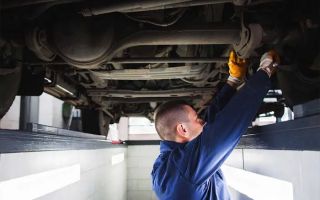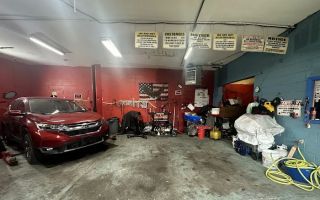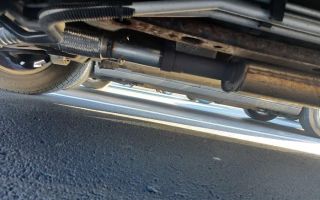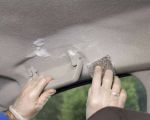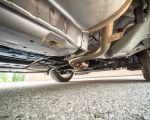- 1-Understanding-Deep-Water-Driving-Risks-#understanding-deep-water-driving-risks
- 2-Assessing-Water-Depth-and-Speed-Before-Entering-#assessing-water-depth-and-speed-before-entering
- 3-Why-Car-Height-and-Engine-Intake-Location-Matter-#why-car-height-and-engine-intake-location-matter
- 4-Key-Tips-for-Safe-Driving-Through-Deep-Water-#key-tips-for-safe-driving-through-deep-water
- 5-Real-Examples-of-Drivers-Facing-Deep-Water-#real-examples-of-drivers-facing-deep-water
- 6-What-to-Do-If-Your-Car-Stalls-in-Deep-Water-#what-to-do-if-your-car-stalls-in-deep-water
- 7-Why-Water-Damage-Can-Be-Serious-for-Engines-#why-water-damage-can-be-serious-for-engines
- 8-How-Rescue-Services-Can-Help-in-Flooded-Roads-#how-rescue-services-can-help-in-flooded-roads
- 9-Final-Steps-to-Keep-You-Safe-During-Water-Hazards-#final-steps-to-keep-you-safe-during-water-hazards
1. Understanding Deep Water Driving Risks
Safe driving through deep water requires more than patience—it demands awareness of how dangerous flooded roads can be. Even a few inches of moving water can push a vehicle off course, while deeper water can leak into your engine, flood electronics, and destroy mechanical components. What may look like a shallow puddle often hides potholes, washed-out pavement, or trapped debris beneath the surface.
Drivers in the United States encounter these conditions more often than expected, especially in regions affected by sudden thunderstorms or rapid snowmelt. Knowing the risks is the first step toward making smart, life-saving decisions on the road.

AJ's Auto Glass & Detailing
4404 S 84th St, Omaha, NE 68127, USA
2. Assessing Water Depth and Speed Before Entering
Before attempting to cross deep water, you must understand both its depth and speed. Water moving faster than 6 mph can become hazardous, even if it appears shallow. Standing water deeper than 6 inches can cause traction loss, and water over 12 inches can reach most passenger car floorboards.
When drivers underestimate water depth, the mistake often leads to hydrolock—one of the costliest engine failures. Observing nearby objects such as road signs, curbs, or other vehicles can help you evaluate the situation, though caution should still be your priority.

AJ's Auto Glass & Detailing
4404 S 84th St, Omaha, NE 68127, USA
Why Slow, Controlled Movement Helps
Driving slowly reduces the wake your vehicle creates. A big wave can push water into sensitive components, including your engine’s intake. Gentle, consistent acceleration minimizes risk and increases control.
3. Why Car Height and Engine Intake Location Matter
Your vehicle’s height largely determines how much water it can safely handle. SUVs tend to have higher air intakes, while sedans and compact cars are more vulnerable. Knowing where your air intake is positioned can help you avoid situations that could flood the engine.
Electric vehicles face different challenges—water can impact battery connectors or lower-body electronics. Understanding your car’s vulnerabilities prepares you to make safer choices while traveling through unpredictable environments.
4. Key Tips for Safe Driving Through Deep Water
The most important tip for safe driving through deep water is simple: avoid entering if you are unsure of the depth. But when crossing is unavoidable, the following strategies offer practical guidance.
Maintaining a Steady Speed
Accelerate gently and maintain a constant pace. Do not stop mid-water, as this increases the chance of stalling.
Using Low Gear for Control
Low gear improves traction and stability, allowing your wheels to grip the submerged surface better.
Keeping a Safe Distance From Other Vehicles
Following too closely can cause the wake from another vehicle to splash into your engine bay or push additional water toward your tires.
5. Real Examples of Drivers Facing Deep Water
During a major storm in Texas, dozens of drivers found themselves trapped on freeway underpasses filled with more than two feet of water. One driver shared that he assumed his pickup truck could handle the flood, only to stall halfway through when water entered the intake.
Another widely circulated video online showed a sedan floating sideways after entering what looked like a small puddle. The water was actually part of a drainage overflow, concealing a deep dip in the road. These cases emphasize why guidance on safe driving through deep water is so important.
6. What to Do If Your Car Stalls in Deep Water
If your car stalls in water, do not try restarting the engine. Water may have entered the cylinders, and attempting to crank the engine can cause irreversible damage. Instead, exit the vehicle if it is safe to do so and move to higher ground.
Once you are safe, emergency towing or recovery services are essential. Rescue & Towing is a trusted option for drivers seeking fast, dependable help during these dangerous situations. Professional recovery prevents further damage and gets your vehicle to a dry, secure location.
7. Why Water Damage Can Be Serious for Engines
Deep water can destroy an engine within seconds. When water enters the intake, the engine cannot compress it, leading to bent connecting rods and internal component failure. Electronics can short out, wiring can corrode, and dashboards can malfunction long after the initial incident.
This is why mechanics stress caution—water damage is often more expensive to repair than many drivers expect.
Additional Long-Term Effects
Even if your car seems to run normally after driving through water, hidden moisture can damage bearings, sensors, and brake systems. A post-incident inspection is highly recommended.
8. How Rescue Services Can Help in Flooded Roads
Professional rescue services have the equipment needed for safe vehicle recovery, including winches, flatbeds, and protective tools designed to minimize additional damage. They also understand how to operate in hazardous environments caused by floodwater.
For drivers unsure who to call during emergencies, Rescue & Towing offers reliable support that many U.S. motorists rely on during storm seasons.
9. Final Steps to Keep You Safe During Water Hazards
Before approaching any water-covered roadway, evaluate the situation, consider alternate routes, and prioritize your safety. Even experienced drivers admit that flooded roads can be unpredictable. The best strategy is always caution.
If you live in an area prone to heavy rains or seasonal flooding, keeping an emergency kit and a trusted towing contact on hand can make a stressful situation more manageable. Preparing ahead ensures you remain safe if you ever face deep water on the road.


